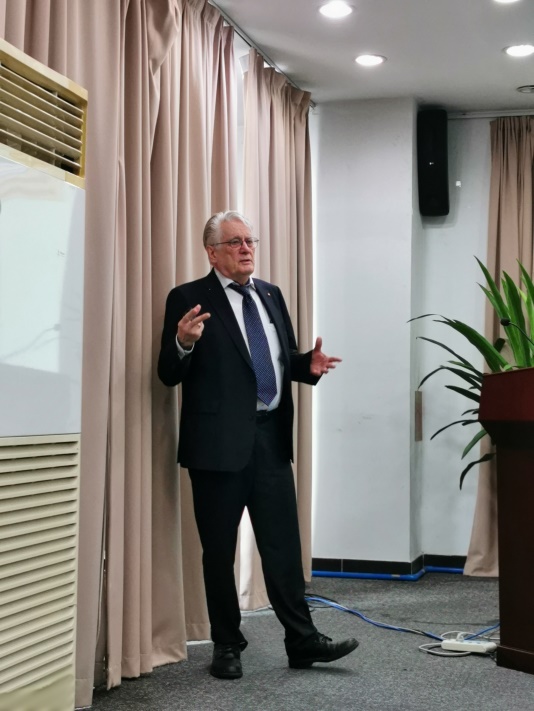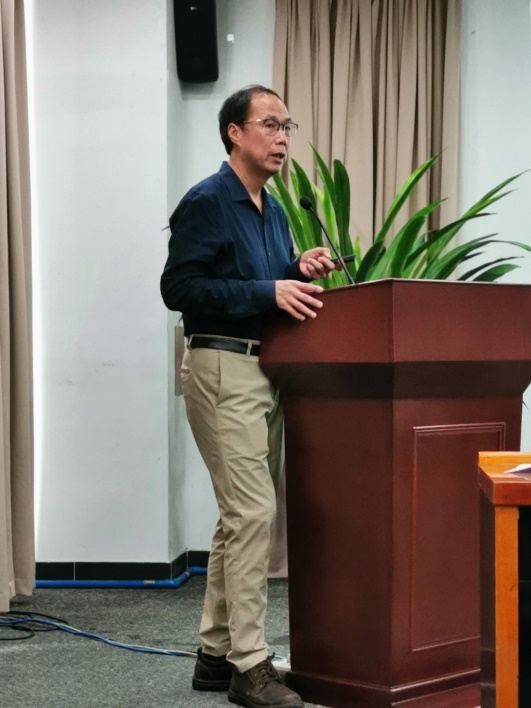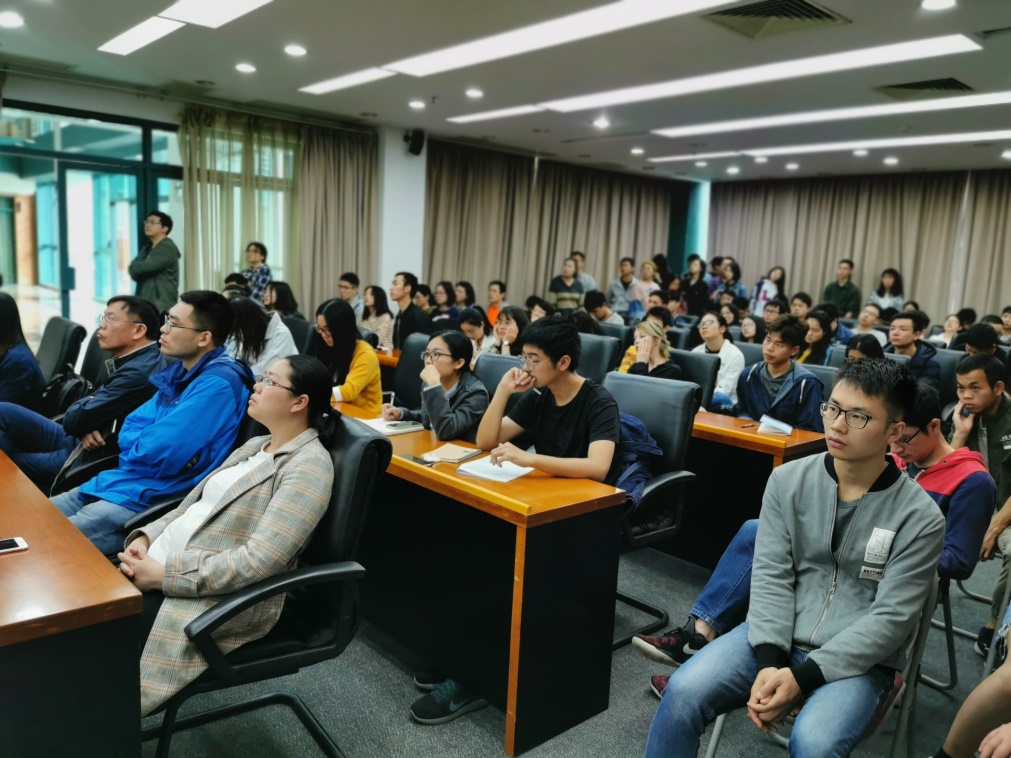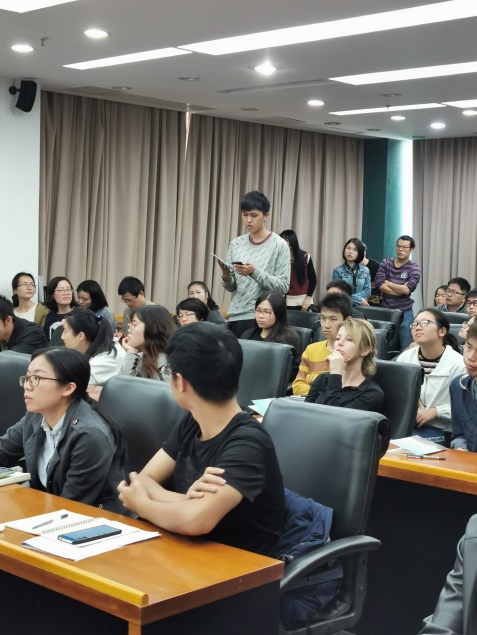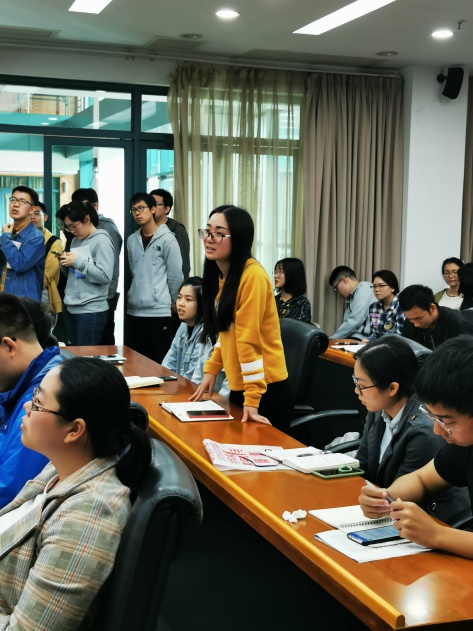德国科学院院士Werner E. G. Müller教授和美国工程院院士Kam W. Leong教授学术报告在大学城校区成功举行
2020新年伊始,德国科学院院士Werner E. G. Müller教授和美国工程院院士Kam W. Leong教授受邀到访华南理工大学国家人体组织功能重建工程技术研究中心,开展学术交流活动。1月6日上午, Werner E. G. Müller教授和Kam W. Leong教授在大学城校区B2一楼会议室为中心师生们带来了一场精彩的学术报告会。
Müller教授学术报告的题目是“Morphogenetically active amorphous polyphosphate nanoparticles: A foundational breakthrough invention for personalized and regenerative medicine”。他非常详细地介绍了无定型多磷酸盐在细胞内的合成过程、其作为能量储存和来源在多个细胞生化反应中的功能及其在再生医学方面的应用前景。此外,Müller教授还介绍了他的团队最近开展的生物活性打印方面的工作。
Kam W. Leong教授学术报告的题目是 “Can microfluidic solve the problems in biomanufacturing-based nanotherapeutics?”。他主要介绍了利用微流控方法(特别是Flash技术)制备载生物活性因子(如蛋白,miRNA,siRNA等)纳米药物的研究进展,以及所制备的纳米药物相对于传统方法制备的纳米药物的优势和特点。
两位院士的报告内容极为丰富,展示了最新的研究结果和前沿进展,现场师生与两位院士积极互动,对新材料和新技术在生物医学领域的应用前景进行了热烈讨论。
|
|
Werner E. G. Müller教授 | Kam W. Leong教授 |
| |
|
|
中心师生与两位教授互动交流 | |
附1:Werner E. G. Müller 院士简介
Prof. Werner E. G. Müller is the Senator and the Academician of the Erfurt Academy of Sciences (Germany), as well as the Academician of the Croatian Academy of molecular biology, (bio)chemistry and tissue engineering. Based on his research achievements, he has been awarded with one ERC Advanced Investigator Grant and three ERC Proof of Concept Grants in the field of enzyme-based biomineralization and regenerative medicine. He was also a recipient of a grant in the frame of the "International Human Frontier Science Program". His work had been recognized by more than 20 national and international scientific awards, including the highest award from Germany “German Federal Cross Medal; 1st class” and the “Friendship Award” from China. He has more than 1,200 publications (Hirsch-index: 84; ISI Web of Science), 21 granted patents and 15 patent applications [DEPATISnet – Data base: 226 hits].
附2:Kam W. Leong 院士简介
Kam W. Leong is the Samuel Y. Sheng Professor of Biomedical Engineering at Columbia University. He received his PhD in Chemical Engineering from the University of Pennsylvania. After serving as a faculty in the Department of Biomedical Engineering at The Johns Hopkins School of Medicine for almost 20 years, he moved to Duke University in 2006 to study the interactions of cells with nanostructures for therapeutic applications. After moving to Columbia University in September 2014, he continues to work on nanoparticle-mediated nonviral gene delivery and immunotherapy. He also works on the application of nanostructured biomaterials for regenerative medicine, particularly on understanding cell-topography interactions and on the application of nonviral vectors for direct cellular reprogramming and genome editing. He has published ~330 peer-reviewed research manuscripts with >39,000 citations, an h-index of 103, and holds more than 50 issued patents. His work has been recognized by a Young Investigator Research Achievement Award of the Controlled Release Society, Distinguished Scientist Award of the International Journal of Nanomedicine, Clemson Award for Applied Research of the Society for Biomaterials, and Life Time Achievement Award of the Chinese American Society of Nanomedicine and Nanotechnology. He is the Editor-in-Chief of Biomaterials, a member of the USA National Academy of Inventors, and a member of the USA National Academy of Engineering.

